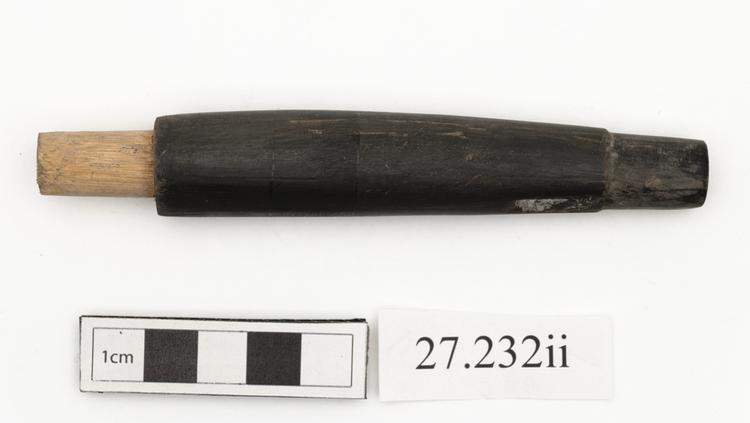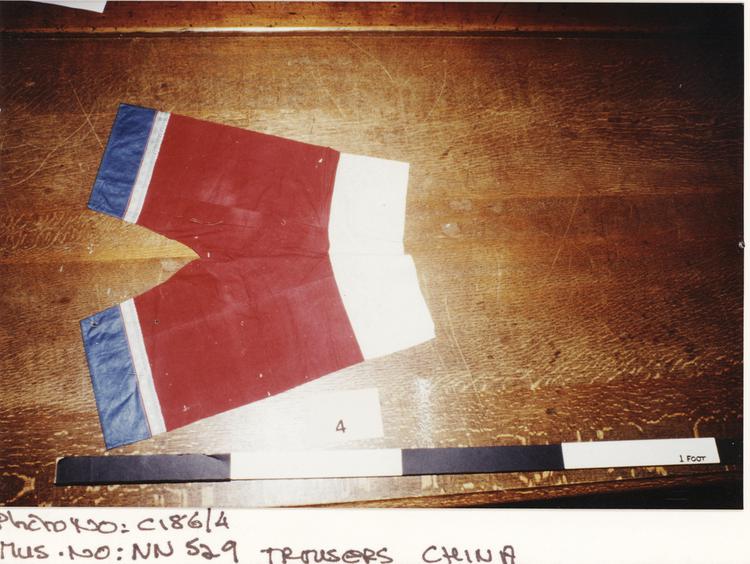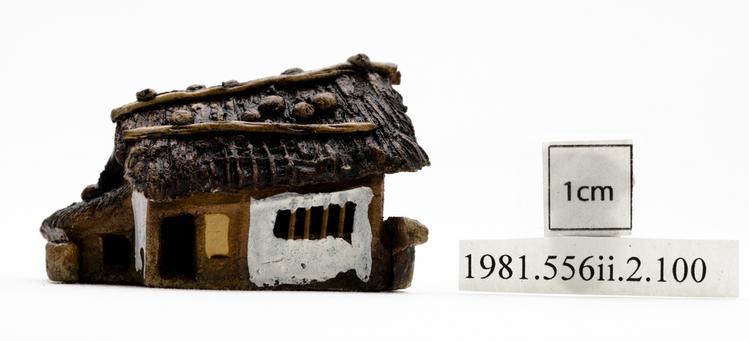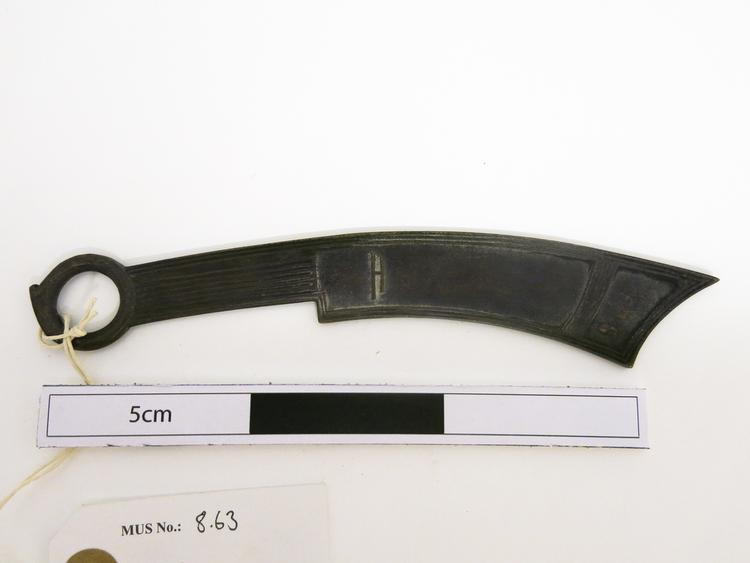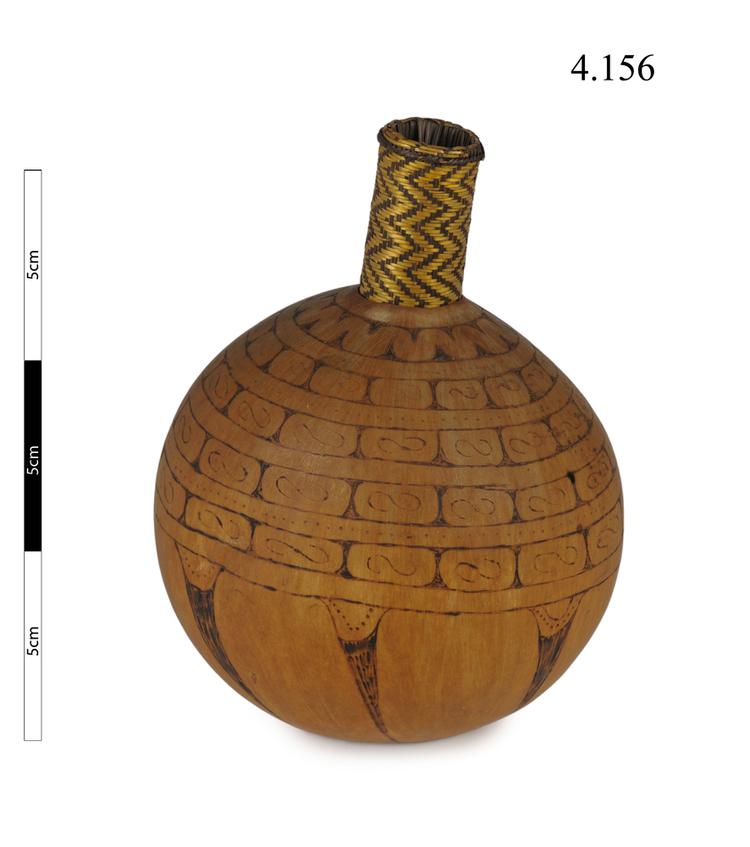
Small lime gourd constructed from a spherically ground bottle gourd which has a cylindrical stopper in a platted sheath of split vegetable fibre in natural and dark brown colours. The spiral leaf core is missing. The surface of the gourd is pyrograved in a number of attractive scroll designs.
Lime Gourd, Massim Province, Southeastern Papua New Guinea. The chewing of nuts from the Areca palm (Areca catechu), commonly referred to as betel nut, was a major recreational activity for men throughout the mainland and island groups of New Guinea. This addictive stimulant (Arecoline) was brought into the island in remote prehistory from Southeast Asia. A complex set of artworks and tools have developed over the centuries around the drug’s preparation and consumption. Lime containers are central to the use of betel nut in New Guinea; the alkaline lime powder (usually obtained by finely grinding coral) activates the Arecoline in the nuts, and so it is needed on hand whenever the nut is chewed. Stoppered gourd containers are produced throughout Papua New Guinea, in which the ground limestone is stored, and from which small quantities are periodically removed using a saliva-wetted lime spatula and put in the mouth alongside the nuts. Like these spatulae, the lime gourds created in the Massim region are particularly impressive artworks. Here, a spherical variety of bottle gourd (Lagenaria siceraria) has been pierced, de-seeded and dried, before its remarkable black-inked decorative scheme was applied, and its stopper of rolled leaf and woven cane was manufactured. This scheme is characteristic of the complex scrollwork art developed by the Trobriand Islanders in their other arts, while at the same time exhibiting a remarkable order and uniformity. Gourd, pandanus leaf, vegetable fibre, pigment. Late 19th Century. Formerly in the private collection of Mr W.D. Webster.



